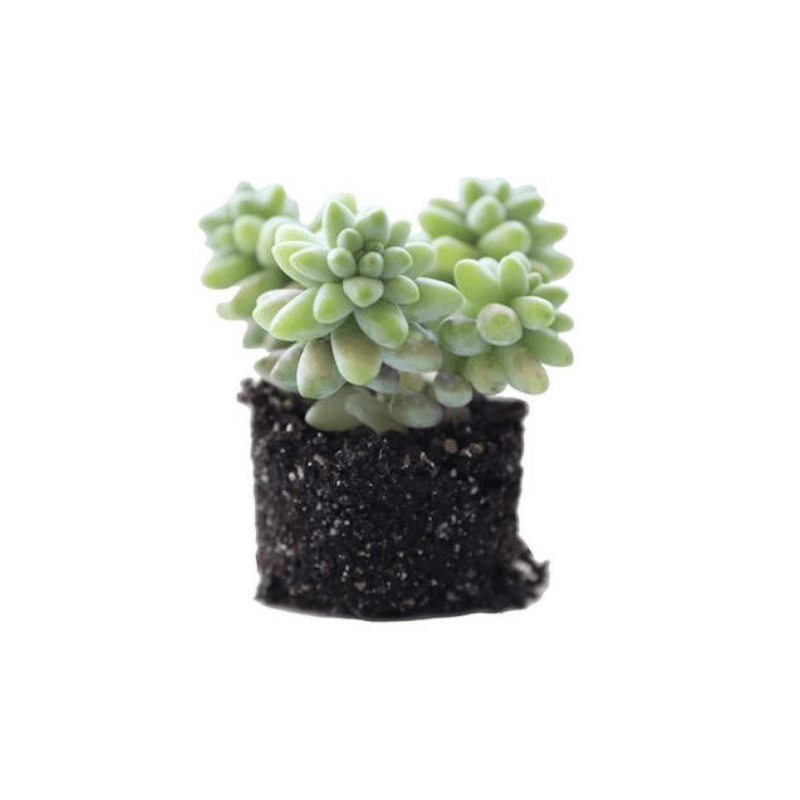

Burro's tail is a showstopper succulent in a hanging planter, with long, luxurious stems draping over the side. Take care not to jostle or over water Sedum morganianum to avoid leaf drop.
The burro’s tail was discovered by an American botanist growing near Veracruz in eastern Mexico in 1932, and its beautiful pendulous stems of quickly made the succulent a favorite among US houseplant collectors.
If you live in a warm climate (USDA growing zones 9 to 11), consider Sedum morganianum a garden plant and use in a container or near the edge of a wall where its stems can drape over the edge. If it’s happy, burro’s tail will grow stems as long as two feet and will bloom periodically (flower color can range from red to white to yellow).
A member of the hardy, easy-to-grow Sedum family, burro’s tail (which also goes by the moniker donkey’s tail) will be happy in bright, indirect light, requires well-drained soil, and will react badly if you water it too much. If you want to grow it as a houseplant, see more tips in Succulents: 8 Tips to Help Your Favorite Indoor Plants Survive.
For another of our favorite succulents with draping foliage, see String of Pearls: A Field Guide to Planting, Care & Design.